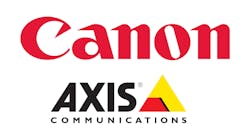As I reflect on this past year and look forward to an exciting and uncertain 2016, a range of thoughts come to mind.
Looking Back
Cyber Awareness: First, I am delighted to see cyber security enter the conversation in our industry, in no small part due to the efforts of Bill Bozeman at PSA Security Network. This is a multi-headed animal. Manufacturers need to assess and improve the cyber-hardening of their products and how they can contribute to end-to-end security. Integrators must determine and meet their responsibilities to their customers, products and service offerings — and potential liabilities. Cyber also needs to be on security consultants’ radar, with project specifications reflecting that sensitivity.
Video Innovations: While Avigilon and Arecont Vision have made past headlines about panoramic cameras, in 2015 several others joined the fray —including Pelco by Schneider Electric and Digital Watchdog, which introduced new multi-sensor offerings with impressive stitching and display technology. Oncam Grandeye, with new U.S. leadership, is making an impact with its single sensor camera with dewarping technology. Analog technology has brought HD video to mainstream dealers — many who are not IT-savvy — and to those who want to simply and easily reuse existing coax cable. AHD is offered in various forms by Digital Watchdog, Hikvision, Honeywell, Dahua and others. Body-worn cameras received increased notoriety this year due to a number of unfortunate well-publicized incidents, as they became law enforcement’s response to the public’s use of smartphone video. Less exciting, but notable is the mainstreaming of analytics in embedded camera firmware and VMS offerings. The “wow factor” in analytics is largely gone and products are now just expected to have some type of analytic suite.
Data Transmission: I noticed a decided uptick in the number and availability of products for transmission of network communications beyond Cat 5e/6. Coaxial cable, power conductors, non-rated twisted pair use varying technologies — many derived from wireless technology — to reliably transmit network signals, subject to the limitations of the conductors. Altronix and Phybridge/NVT are two notable examples.
IT Security: Speaking of networks, it still surprises me that the only “name” IT company making a splash in the security market is EMC. We have seen IBM, Cisco, Dell and others come and go, as they continue to rely on their existing IT as a default strategy. Now, EMC will belong to Dell, but I would be surprised to see them back away from the security market.
Situational Awareness: It is becoming more mainstream as PSIM (and similar) suppliers make their offerings more relevant and usable. Factors external to an organization, be they rooted in weather, terrorism, cultural, or other, can now be seamlessly tracked and integrated with internal information to form a more holistic understanding of an organization’s security profile.
M&A Activity: 2015 saw Dean Drako, former founder of Barracuda and CEO of Eagle Eye Networks, make another bet on security by buying Brivo, purveyor of cloud-based access control. Recall that Michael Dell helped back Drako on Eagle Eye. Many security practitioners have still not bought into the cloud, due to concerns about security and resilience, but the industry will continue to chip away at these feelings. My candidate for most interesting acquisition of this past year is Canon’s purchase of Axis Communications. Thus far, it’s been hands-off and business as usual at Axis, which I believe is the smart thing to do. How will it play downstream with Milestone in the mix and who will be calling those shots? Stay tuned.
Looking Ahead
Looking ahead at 2016, we can expect all of those things I have mentioned to continue and evolve, but what new things can we expect?
Embedded Cyber Security: I believe we will see more embedded cyber features in security products such as integrated client device authentication and advanced encryption technology. Many vendors already have significant embedded security features that are not being used, arguing for more user education on existing features rather than more features.
Biometric Identification: Multi-factor authentication employing biometrics is going to explode, driven by the heightened awareness of authentication in the consumer market — driven in part by credit card chip technology and the availability of a range of good biometric technology choices. Common biometric credentials for both physical and logical access will become more the norm.
Wireless: Wireless communications will become even more mainstream, particularly in situations that are budget-challenged. Wireless locks and access control components, video and intrusion systems can all expect to see a steady rise in their use.
Video Innovation: Expect continuing video advances in panoramic camera imaging, software and integration. This is megapixel technology on steroids that can reduce the number of deployed devices, while offering an expanded range of user viewing options. Advanced software increases the usability and value of these systems. We will see the first hints of H.265 — possibly coming out of Asia and certainly with DVR/NVRs. The real action in cameras won’t happen until 2017, when I expect to see some very fine 4K cameras to go along with all those new 4K displays. Look for 8K to start creeping into the conversation as well. FLIR is committed to pushing thermal into security’s forefront, and its acquisition of DVTel will help. Lower-cost imagers and integration with visible technology will make this an area to watch.
Data Management: As networks proliferate and the NIST Cyber Security framework takes hold, expect to see the need for Asset Data Management Systems (ADMS) to enable users and integrators to better track and manage their security networks assets. This is another cloud-based opportunity for integrators to expand their service offerings.
Better Specification: Finally, I hope to see better, more complete security specifications being written, due to the heightened awareness of specifiers in our industry, better guidelines for specification writing, and more effective engagement by manufacturers with security consultants and engineers.
Ray Coulombe is Founder and Managing Director of SecuritySpecifiers and RepsForSecurity.com. Reach him at [email protected], through LinkedIn at www.linkedin.com/in/raycoulombe or on Twitter, @RayCoulombe.







